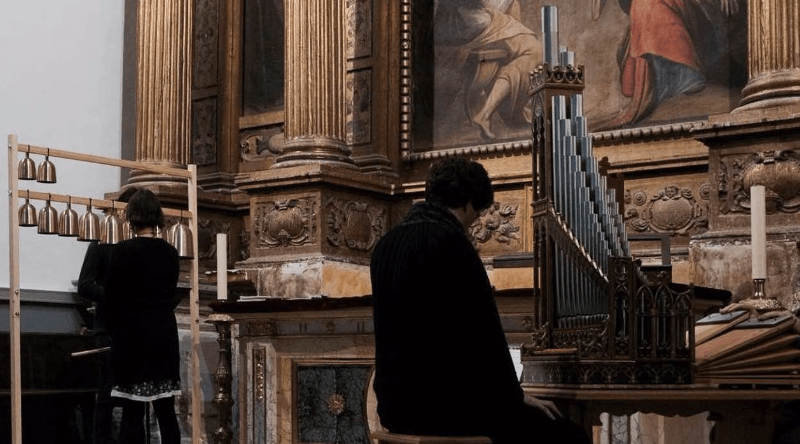The Las Huelgas Codex and Newly Discovered Sources
«[they] freely divide tones into semitones with a sweet-sounding throat, and semitones into indivisible microtones, rejoicing in an indescribable melody that one would deem angelic rather than human. So it is that these women––goddesses or, indeed, earthly Sirens––enchant the bewitched ears of their listeners and steal away their hearts».
Arnulf of St Gislain (14th c.)
The Las Huelgas Codex is one of the most well-known and important European sources of polyphonic music from the late Middle Ages surviving today. The manuscript brings together the motets, conductus, cantilenas and polyphonic settings of mass ordinary used in the Royal Monastery of Las Huelgas in Burgos throughout the 13th and 14th centuries. Traditionally, musicologists have dated the copy of this manuscript to around 1300-1325. A more recent study, however, shows that the copy should be dated to the decade of the 1340s and that the manuscript may have remained in use through the beginning of the 15th century. This new dating entails a major step forward in our understanding of the manuscript’s history and provides a new chronological framework for the performance of its works. Likewise, the discovery of new correspondences with fragmentary codices preserved in France and Germany has made it possible to reconstruct various pieces that were left incomplete in the Las Huelgas Codex. Lastly, the recent discovery of various folios pertaining to lost codices of medieval polyphony from the cathedrals of Sigüenza and Seville has contributed notably to the enrichment of our overall view of musical life in 14th-century Castile. These folios provide us with new elements that enable us to contextualize the music of the Las Huelgas Codex within a wider Iberian panorama of sources.
Canto Coronato proposes a revamped interpretation of the Las Huelgas Codex showcasing pieces reconstructed for the first time on the basis of their new fragmentary correspondences. The program also includes a spectacular four-part composition recently discovered in the new manuscript from the Sigüenza Cathedral. The vocal group is divided into female and male voices, thus simulating the choirs of nuns and clerics of Las Huelgas with an elaborate staging. The women’s vocal performance explores the virtuosity and the microtonal subtleties that, according to the 14th-century theorist Arnulf of St Gislain, made the nuns’ song as astoundingly beautiful and captivating as that of the sirens. Curiously, the current choir chairs of Las Huelgas display siren figures holding the arms of Castile and León. The selected instrumental setting includes two different types of Gothic organs (whose documentation in Burgos dates back to the 1220s), two carillons of seven Pythagorean bells each (an instrument greatly valued in Castilian musical institutions) and a plucked psaltery (an instrument that medieval iconography frequently shows in the hands of nuns).
